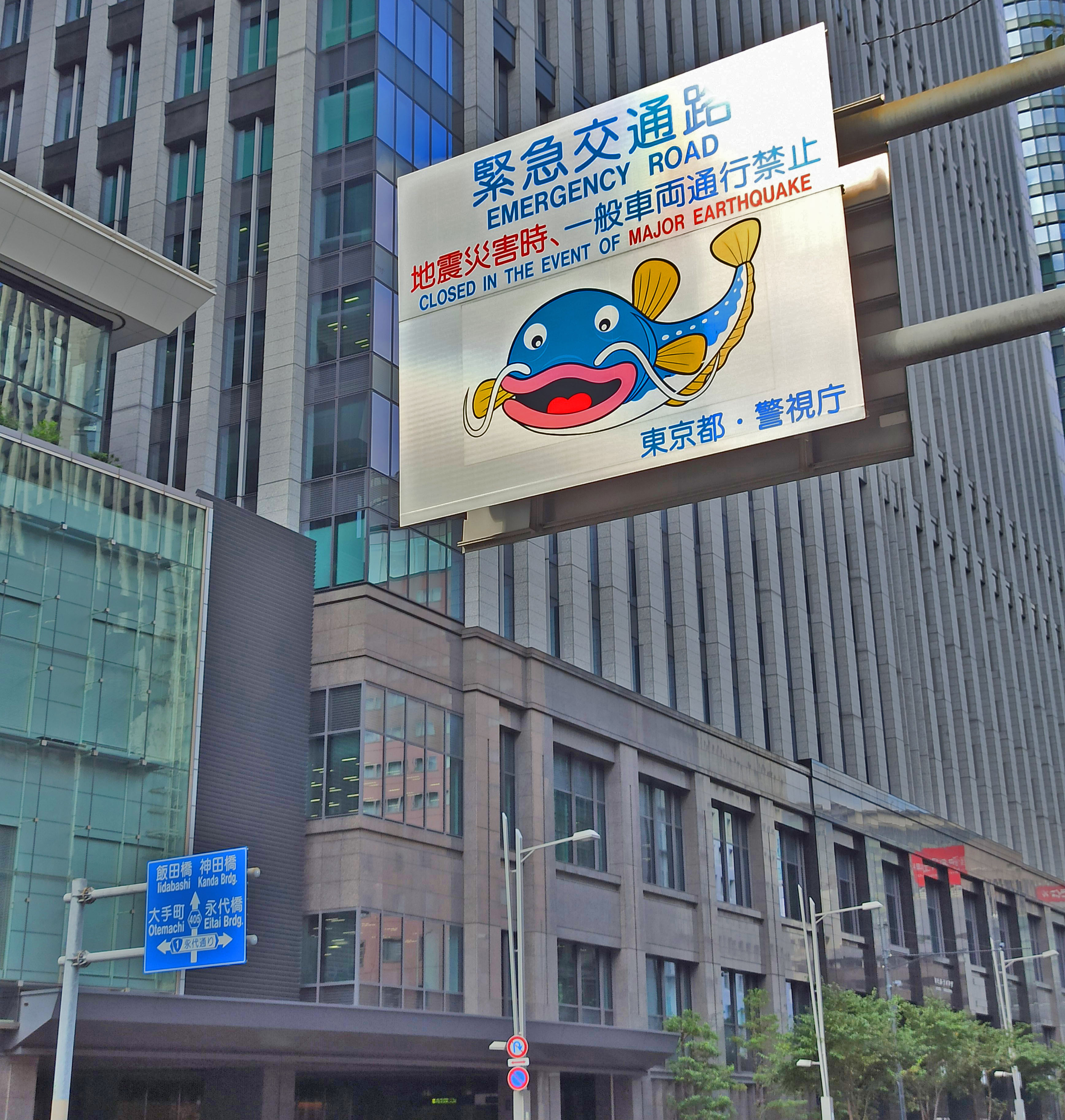Take a stroll around the Yaesu exit (八重洲口) of Tokyo train station along Sotobori St (外堀通り), and you might notice a seemingly bizarre graphic on one of the road signs:

Looks like a chuffed catfish, right? Well, if you’ve traveled a bit around Japan, you might have mistaken the image for one of the myriad yurukyara (ゆるキャラ), or mascots representing a district, city, or concept.
Nope.
According to Japanese folklore, for centuries there has been that a giant catfish — in Japanese, namazu (鯰), or {big namazu} onamazu (大鯰) — roamed deep in the earth’s crust, causing natural disasters by thrashing its tail around. Occasionally, it would get really stewed and create huge earthquakes, such as the Great Ansei earthquake of 1855.
It was a common belief that the Shinto Japanese god of thunder and swords, Takemikazuchi, (建御雷/武甕槌), ordinarily calmed the namazu by keeping a kaname-ishi (要石), or keystone, on its head. Only when Takemikazuchi attended the annual meeting of the Shinto gods in Izumo would the namazu start inflicting major damage on Japan.
Coincidentally, it was mostly the aristocracy and wealthy class that disdained the namazu. Working-class carpenters, bricklayers, and artisans were often depicted in traditional woodblock prints celebrating the the catfish, since the destruction brought them jobs and thus, income. This binary concept reflected yonaoshi (世直し), or the cycle of the redistribution of wealth, wherein the rich had to rebuild and the poorer would be gainfully employed.
The namazu is just one of many examples of the juxtaposition of ancient Japanese history in its contemporary glass-and-steel territory.
Have you ever noticed the numazu while in Japan? Are there similar ages-old harbingers still present in your country?

Leave a Reply